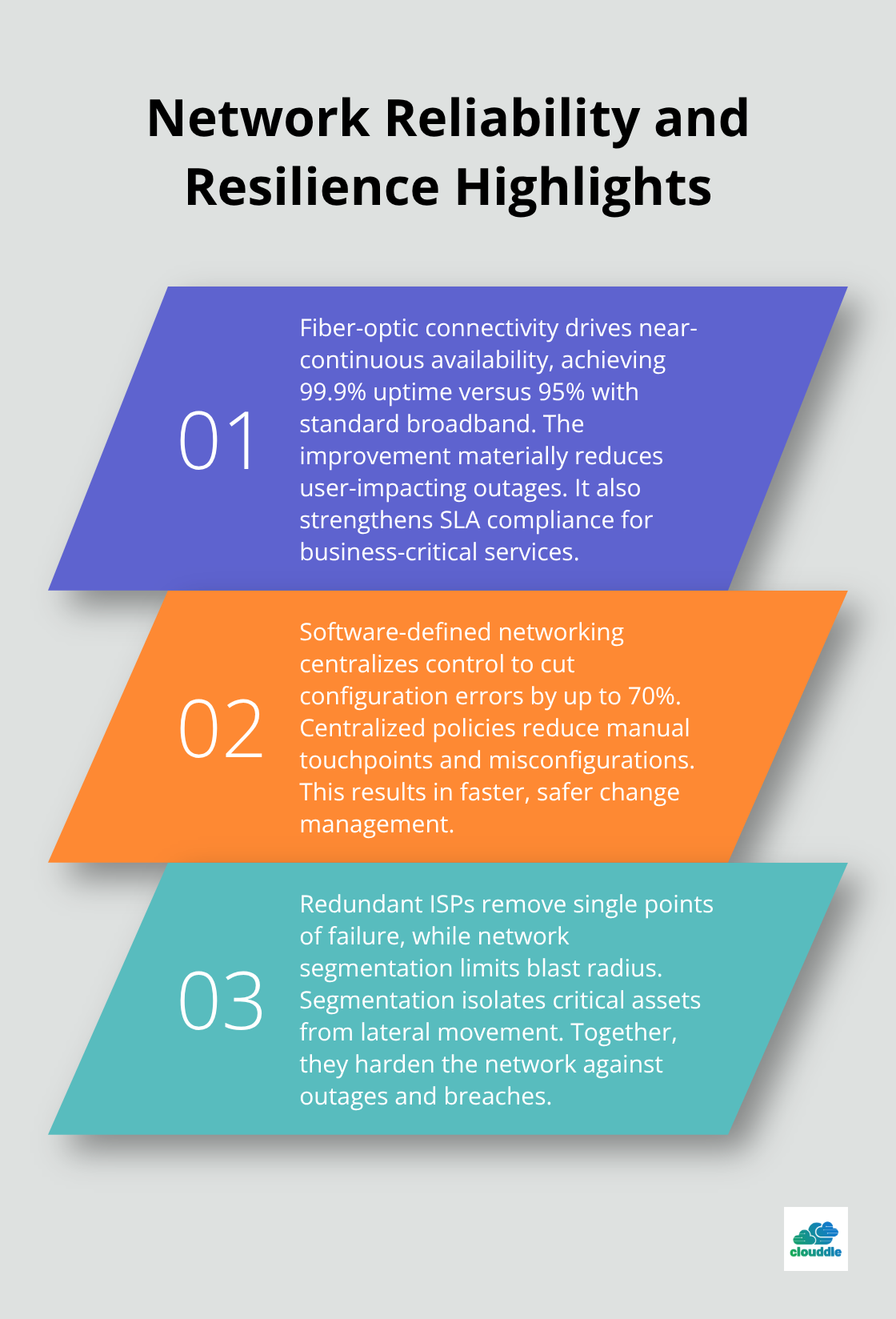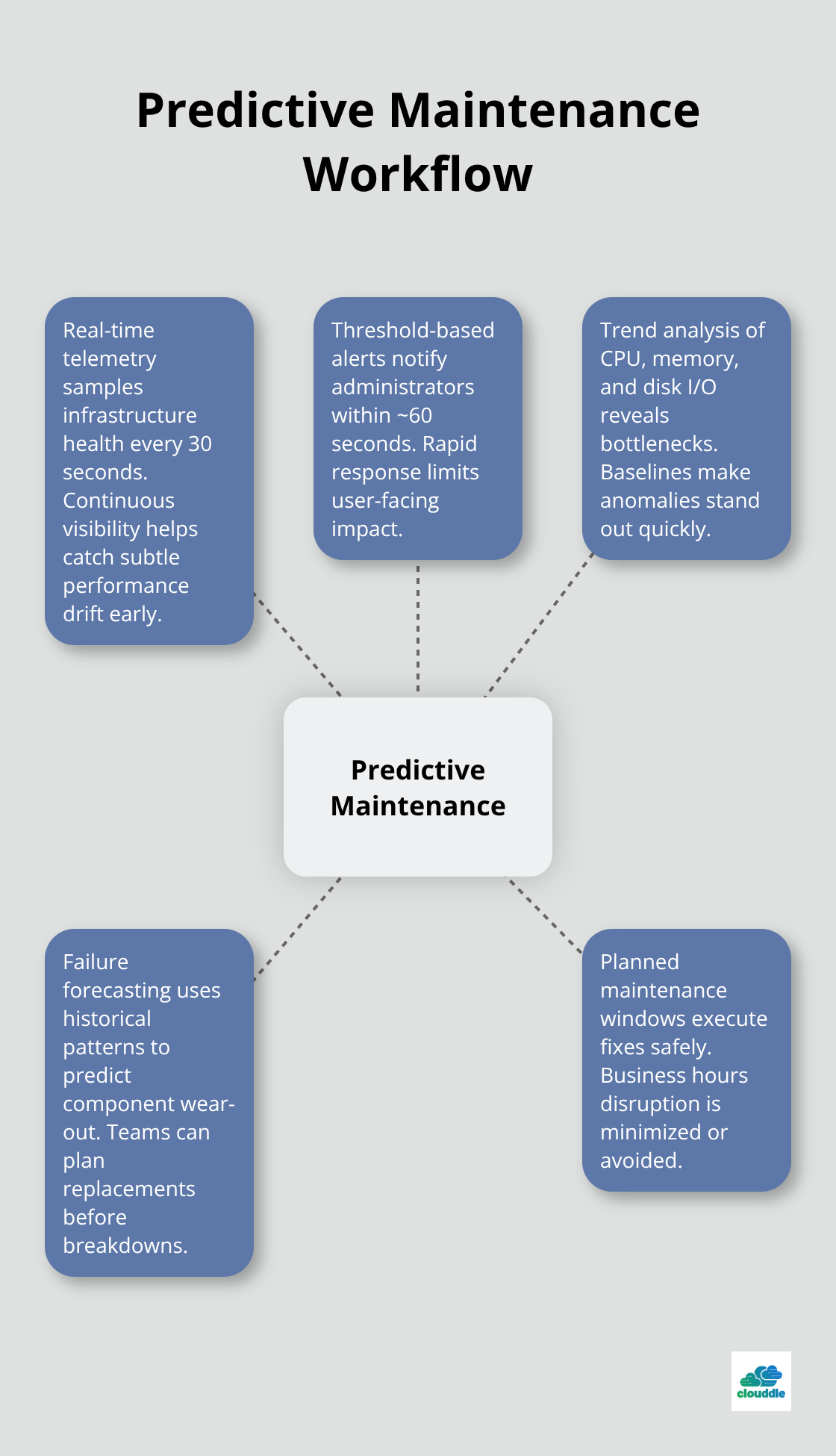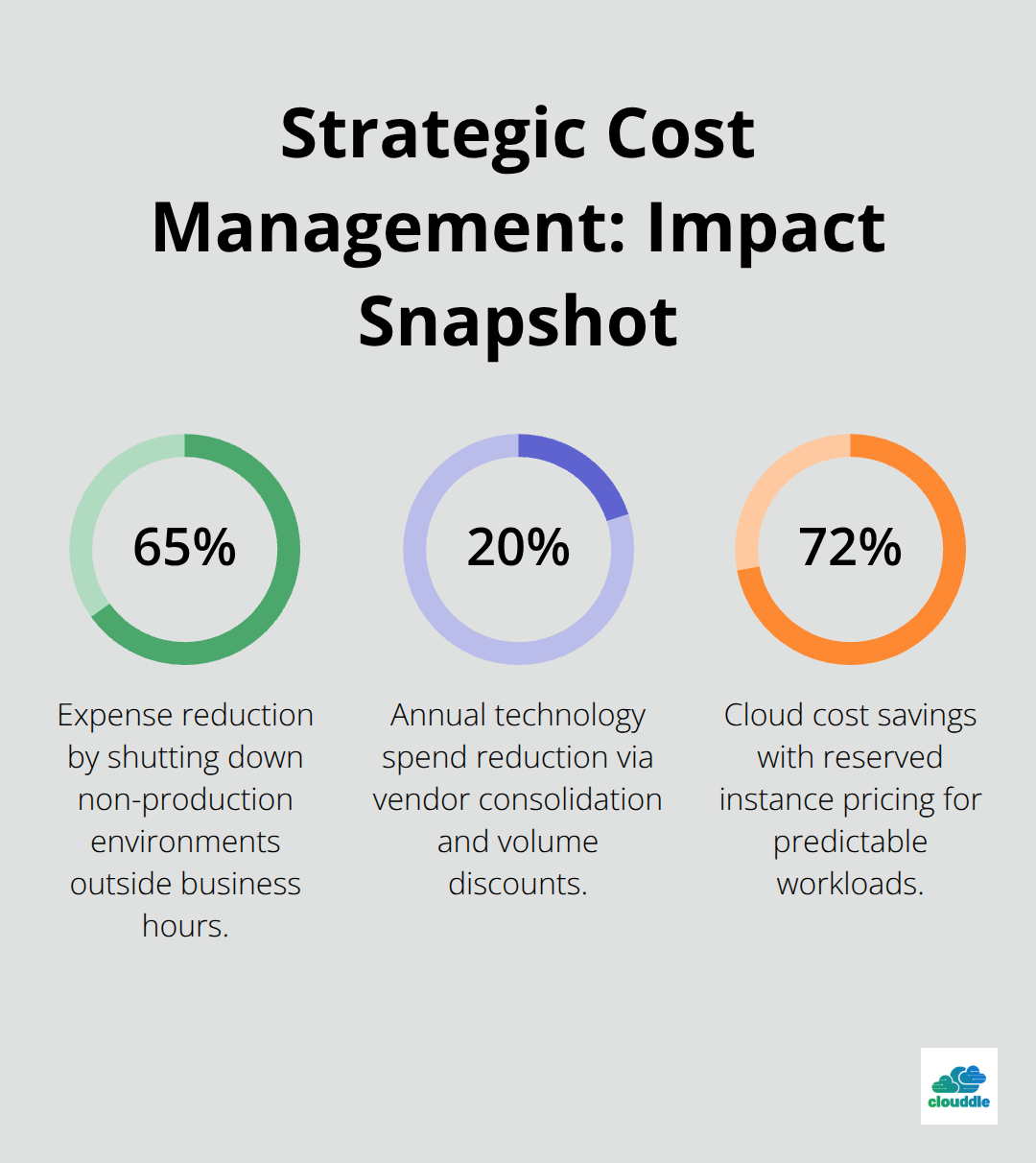IT infrastructure management forms the backbone of every successful business operation. Without proper systems in place, companies face costly downtime, security breaches, and operational inefficiencies.
We at Clouddle see organizations struggle with these challenges daily. This guide provides actionable strategies to build resilient, scalable infrastructure that supports your business growth.
Key Components of IT Infrastructure Management
Network Infrastructure and Connectivity
Network infrastructure requires strategic investment in enterprise-grade equipment and redundant connectivity solutions. Companies that deploy fiber-optic connections achieve 99.9% uptime compared to 95% with standard broadband connections, according to Cisco’s enterprise networking studies. Software-defined networking centralizes control and reduces configuration errors by up to 70%.

Redundant internet service providers eliminate single points of failure, while network segmentation isolates critical systems from potential security breaches.
Server Management and Virtualization
Modern server management leverages virtualization technologies that consolidate physical hardware and reduce operational costs. Organizations achieve significant hardware cost reductions through effective virtualization strategies that improve energy efficiency and enhance data center operations. Hypervisor platforms like VMware vSphere or Microsoft Hyper-V enable multiple virtual machines on single physical servers, which maximizes resource utilization. Container orchestration with Kubernetes optimizes application deployment and scaling capabilities across distributed environments.
Security Systems and Data Protection
Security systems demand comprehensive approaches beyond traditional firewalls and antivirus software. Next-generation firewalls provide managed firewall-as-a-service solutions that effectively protect against modern threats, while endpoint detection and response solutions identify zero-day attacks within minutes rather than weeks. Network access control systems authenticate every device that connects to your infrastructure, which prevents unauthorized access from compromised endpoints. Data encryption at rest and in transit protects sensitive information even during security breaches (AES-256 encryption remains unbreakable by current computing standards).
Storage Solutions and Data Management
Storage infrastructure forms the foundation for data accessibility and business continuity. Solid-state drives deliver 10x faster read speeds than traditional hard drives, while network-attached storage provides centralized file access across multiple locations. Cloud storage integration offers unlimited scalability with 99.999% availability guarantees from major providers like AWS and Microsoft Azure. Automated backup systems create multiple recovery points daily, reducing potential data loss to mere minutes rather than hours or days.
These infrastructure components work together to create a robust foundation, but their effectiveness depends entirely on how well you implement proven management practices.
Best Practices for IT Infrastructure Management
Continuous System Monitoring and Predictive Maintenance
Real-time monitoring systems identify performance degradation before failures occur, which reduces unplanned downtime significantly according to network outage research. Network monitoring tools like SolarWinds and Nagios track bandwidth utilization, latency, and packet loss across all infrastructure components every 30 seconds. Server performance metrics including CPU load, memory usage, and disk I/O patterns reveal bottlenecks that cause application slowdowns.
Automated alert systems notify administrators when thresholds exceed normal parameters, typically within 60 seconds of detection. Predictive analytics examine historical performance data to forecast when hardware components will fail. This approach enables scheduled replacements during maintenance windows rather than emergency outages (preventing costly disruptions during business hours).

Business Continuity Through Strategic Planning
Disaster recovery plans must specify recovery time objectives and recovery point objectives for mission-critical systems. Geographic replication of data centers across multiple availability zones protects against regional disasters. Automated failover systems restore services without human intervention when primary systems fail.
Hot standby servers maintain synchronized data copies that activate immediately during outages. Communication protocols define escalation procedures and stakeholder notifications during incidents. Regular testing validates recovery procedures every quarter, with documented results that show actual recovery times compared to established objectives.
Technology Partnership Excellence
Vendor relationships require service level agreements with 99.9% uptime guarantees and financial penalties for non-compliance. Strategic partnerships with hardware manufacturers provide priority support and advanced replacement programs that deliver equipment within 4 hours. Cloud service providers offer redundant infrastructure across multiple data centers with automatic scaling capabilities.
Managed service providers handle routine maintenance tasks, which frees internal teams to focus on strategic initiatives. Contract negotiations should include performance metrics, escalation procedures, and regular business reviews to maintain accountability (these reviews typically occur quarterly). These partnerships create the foundation for addressing the complex challenges that organizations face when scaling their infrastructure operations.
Common IT Infrastructure Challenges and Solutions
Scaling Without Breaking Systems
Infrastructure scalability failures cost businesses significant amounts, with over 90% of organizations estimating their downtime costs exceed $300,000 per hour. Organizations that experience 40% annual growth typically see their network performance degrade by 60% without proper capacity planning. The solution requires horizontal scaling through load balancers that distribute traffic across multiple servers and prevent single points of failure during peak demand periods.
Database sharding splits large datasets across multiple servers, which reduces query response times from seconds to milliseconds. Auto-scaling cloud instances automatically provision additional resources when CPU utilization exceeds 80%, then scale down during low-demand periods to control costs. This approach maintains performance while organizations grow rapidly.
Advanced Threat Detection and Response
Cybersecurity incidents now represent significant financial risks for organizations, with IBM’s latest research providing comprehensive insights into data breach costs and cybersecurity threats. Ransomware attacks occur frequently across global networks. Traditional antivirus software detects only 25% of modern threats, which makes behavioral analysis systems mandatory for effective protection. Zero-trust architecture assumes every connection is potentially hostile and requires multi-factor authentication for all system access.
Security information and event management platforms analyze millions of log entries in real-time and identify attack patterns within minutes (compared to months for manual detection). Employee security training reduces successful phishing attempts by 70%, which makes quarterly training sessions non-negotiable for modern organizations.
Strategic Cost Management
IT budgets consume 15% of total business revenue on average, but poor resource allocation wastes 30% of these investments. Cloud cost optimization tools identify unused resources that typically account for significant monthly waste per organization. Reserved instance pricing reduces cloud computing costs by 72% compared to on-demand pricing for predictable workloads.
Automated resource scheduling shuts down development environments outside business hours and cuts unnecessary expenses by 65%. Regular vendor contract reviews reveal opportunities to consolidate services and negotiate volume discounts that reduce annual technology spending by 20%.

Final Thoughts
Effective IT infrastructure management transforms business operations through systematic network reliability, security protocols, and scalability solutions. Organizations that implement these strategies achieve 99.9% uptime while reducing operational costs by 30% through strategic automation and vendor partnerships. Professional IT management services provide specialized expertise that internal teams often lack.
We at Clouddle deliver comprehensive solutions through our Network as a Service model. This approach eliminates upfront investments while providing 24/7 support and flexible contracts that adapt to business growth. Implementation begins with infrastructure assessment and priority identification (document current systems, establish monitoring protocols, and create disaster recovery procedures within 90 days).
Clouddle specializes in hospitality, multi-family dwelling, and senior living sectors. Our certified hardware partnerships guarantee reliable connectivity while empowering businesses to focus on growth rather than technical complexities. Partner with certified providers who offer bundled solutions and proven track records in your industry.


